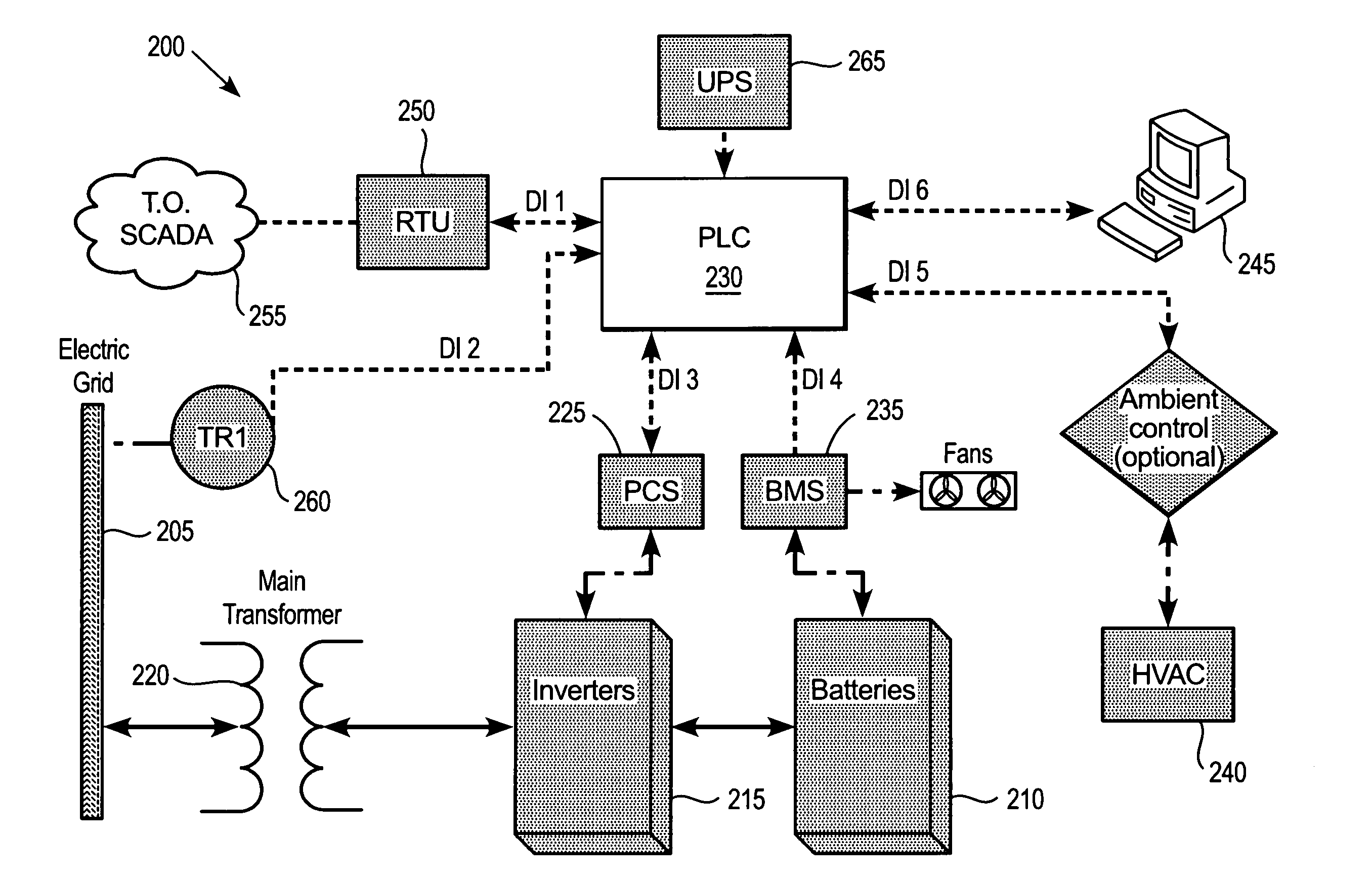Frequency responsive charge sustaining control of electricity storage systems for ancillary services on an electrical power grid
a technology of electricity storage system and ancillary services, which is applied in the direction of electric power transfer ac network, mechanical equipment, machines/engines, etc., can solve the problems of inefficiency, unsafe operation, and increased actual load, and achieve the effect of reducing the risk of failure to meet the actual load fluctuations, reducing the efficiency of electricity storage system, and reducing the risk of failur
- Summary
- Abstract
- Description
- Claims
- Application Information
AI Technical Summary
Benefits of technology
Problems solved by technology
Method used
Image
Examples
Embodiment Construction
[0018]Disclosed embodiments provide systems, apparatus, and methods for maintaining the state of charge (SOC) of an energy storage device that is energetically coupled with the electricity grid to provide ancillary services. As an example, when an operator requests regulation (i.e. adding or removing energy from the grid), a regulation system services the request by providing additional energy from the energy storage device or absorbing excess energy into the energy storage device. In order to reliably respond to subsequent operator requests, the charge on the energy storage device is sustained within a specified range.
[0019]By way of background, and to facilitate an understanding of the principles behind the invention, a frequency regulation unit that employs batteries as energy storage cells will be described as an example of an ancillary service to which the principles of the invention can be applied. It is possible to apply these principles to the management and control other ty...
PUM
 Login to View More
Login to View More Abstract
Description
Claims
Application Information
 Login to View More
Login to View More - R&D
- Intellectual Property
- Life Sciences
- Materials
- Tech Scout
- Unparalleled Data Quality
- Higher Quality Content
- 60% Fewer Hallucinations
Browse by: Latest US Patents, China's latest patents, Technical Efficacy Thesaurus, Application Domain, Technology Topic, Popular Technical Reports.
© 2025 PatSnap. All rights reserved.Legal|Privacy policy|Modern Slavery Act Transparency Statement|Sitemap|About US| Contact US: help@patsnap.com



